Ethyl 4-acetyl-5-methylisoxazole-3-carboxylate
Modify Date: 2025-08-30 11:20:37
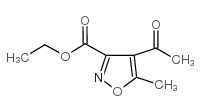
Ethyl 4-acetyl-5-methylisoxazole-3-carboxylate structure
|
Common Name | Ethyl 4-acetyl-5-methylisoxazole-3-carboxylate | ||
|---|---|---|---|---|
| CAS Number | 15911-11-2 | Molecular Weight | 197.18800 | |
| Density | 1.176g/cm3 | Boiling Point | 339.9ºC at 760mmHg | |
| Molecular Formula | C9H11NO4 | Melting Point | N/A | |
| MSDS | N/A | Flash Point | 159.4ºC | |
| Name | ethyl 4-acetyl-5-methyl-1,2-oxazole-3-carboxylate |
|---|---|
| Synonym | More Synonyms |
| Density | 1.176g/cm3 |
|---|---|
| Boiling Point | 339.9ºC at 760mmHg |
| Molecular Formula | C9H11NO4 |
| Molecular Weight | 197.18800 |
| Flash Point | 159.4ºC |
| Exact Mass | 197.06900 |
| PSA | 69.40000 |
| LogP | 1.36230 |
| Vapour Pressure | 8.91E-05mmHg at 25°C |
| Index of Refraction | 1.483 |
| InChIKey | KABXFHWGNZLDTD-UHFFFAOYSA-N |
| SMILES | CCOC(=O)c1noc(C)c1C(C)=O |
Synonym: Section 2 - COMPOSITION, INFORMATION ON INGREDIENTS
Risk Phrases: 22 36/37/38 Section 3 - HAZARDS IDENTIFICATION EMERGENCY OVERVIEW
Harmful if swallowed. Irritating to eyes, respiratory system and skin. Potential Health Effects Eye: Causes eye irritation. Skin: Causes skin irritation. Ingestion: Harmful if swallowed. May cause irritation of the digestive tract. Inhalation: Causes respiratory tract irritation. Chronic: Not available. Section 4 - FIRST AID MEASURES Eyes: Flush eyes with plenty of water for at least 15 minutes, occasionally lifting the upper and lower eyelids. Get medical aid. Skin: Get medical aid. Flush skin with plenty of water for at least 15 minutes while removing contaminated clothing and shoes. Ingestion: Get medical aid. Wash mouth out with water. Inhalation: Remove from exposure and move to fresh air immediately. If not breathing, give artificial respiration. If breathing is difficult, give oxygen. Get medical aid. Notes to Physician: Treat symptomatically and supportively. Section 5 - FIRE FIGHTING MEASURES General Information: As in any fire, wear a self-contained breathing apparatus in pressure-demand, MSHA/NIOSH (approved or equivalent), and full protective gear. Extinguishing Media: Use water spray, dry chemical, carbon dioxide, or chemical foam. Section 6 - ACCIDENTAL RELEASE MEASURES General Information: Use proper personal protective equipment as indicated in Section 8. Spills/Leaks: Absorb spill with inert material (e.g. vermiculite, sand or earth), then place in suitable container. Vacuum or sweep up material and place into a suitable disposal container. Section 7 - HANDLING and STORAGE Handling: Avoid breathing dust, vapor, mist, or gas. Avoid contact with skin and eyes. Storage: Store in a cool, dry place. Store in a tightly closed container. Section 8 - EXPOSURE CONTROLS, PERSONAL PROTECTION Engineering Controls: Facilities storing or utilizing this material should be equipped with an eyewash facility and a safety shower. Use adequate ventilation to keep airborne concentrations low. Exposure Limits CAS# 15911-11-2: Personal Protective Equipment Eyes: Not available. Skin: Wear appropriate protective gloves to prevent skin exposure. Clothing: Wear appropriate protective clothing to prevent skin exposure. Respirators: Follow the OSHA respirator regulations found in 29 CFR 1910.134 or European Standard EN 149. Use a NIOSH/MSHA or European Standard EN 149 approved respirator if exposure limits are exceeded or if irritation or other symptoms are experienced. Section 9 - PHYSICAL AND CHEMICAL PROPERTIES Physical State: Solid Color: Not available. Odor: Not available. pH: Not available. Vapor Pressure: Not available. Viscosity: Not available. Boiling Point: 110 deg C @0.3mm Hg Freezing/Melting Point: Not available. Autoignition Temperature: Not available. Flash Point: Not available. Explosion Limits, lower: Not available. Explosion Limits, upper: Not available. Decomposition Temperature: Solubility in water: Specific Gravity/Density: Molecular Formula: C9H11NO4 Molecular Weight: 197.19 Section 10 - STABILITY AND REACTIVITY Chemical Stability: Stable under normal temperatures and pressures. Conditions to Avoid: Incompatible materials. Incompatibilities with Other Materials: Strong oxidizing agents, acids. Hazardous Decomposition Products: Carbon monoxide, carbon dioxide. Hazardous Polymerization: Has not been reported Section 11 - TOXICOLOGICAL INFORMATION RTECS#: CAS# 15911-11-2: NY2360000 LD50/LC50: CAS# 15911-11-2: Oral, rat: LD50 = 1 gm/kg. Carcinogenicity: Ethyl 4-acetyl-5-methylisoxazole-3-carboxylate - Not listed by ACGIH, IARC, or NTP. Other: See actual entry in RTECS for complete information. Section 12 - ECOLOGICAL INFORMATION Section 13 - DISPOSAL CONSIDERATIONS Dispose of in a manner consistent with federal, state, and local regulations. Section 14 - TRANSPORT INFORMATION IATA Not regulated as a hazardous material. IMO Not regulated as a hazardous material. RID/ADR Not regulated as a hazardous material. Section 15 - REGULATORY INFORMATION European/International Regulations European Labeling in Accordance with EC Directives Hazard Symbols: XN Risk Phrases: R 22 Harmful if swallowed. R 36/37/38 Irritating to eyes, respiratory system and skin. Safety Phrases: S 22 Do not breathe dust. S 26 In case of contact with eyes, rinse immediately with plenty of water and seek medical advice. S 36/37/39 Wear suitable protective clothing, gloves and eye/face protection. WGK (Water Danger/Protection) CAS# 15911-11-2: No information available. Canada None of the chemicals in this product are listed on the DSL/NDSL list. CAS# 15911-11-2 is not listed on Canada's Ingredient Disclosure List. US FEDERAL TSCA CAS# 15911-11-2 is not listed on the TSCA inventory. It is for research and development use only. SECTION 16 - ADDITIONAL INFORMATION N/A |
CHEMICAL IDENTIFICATION
HEALTH HAZARD DATAACUTE TOXICITY DATA
|
| HS Code | 2934999090 |
|---|
| Precursor 7 | |
|---|---|
| DownStream 4 | |
| HS Code | 2934999090 |
|---|---|
| Summary | 2934999090. other heterocyclic compounds. VAT:17.0%. Tax rebate rate:13.0%. . MFN tariff:6.5%. General tariff:20.0% |
| 4-acetyl-5-methyl-isoxazole-3-carboxylic acid ethyl ester |
| 3-ISOXAZOLECARBOXYLIC ACID,4-ACETYL-5-METHYL-,ETHYL ESTER |
| ethyl 4-acetyl-5-methylixazole-3-carboxylate |
| 4-Acetyl-5-methyl-3-isoxazolecarboxylic acid ethyl ester |
| ethyl 4-acetyl-5-methyl-3-isoxazolylcarboxylate |
| 4-acetyl-5-methyl-isoxazole-3-carboxylate |
| Ethyl 4-acetyl-5-methylisoxazole-3-carboxylate |
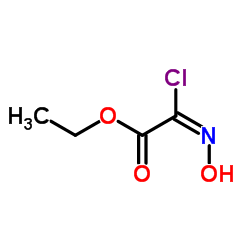
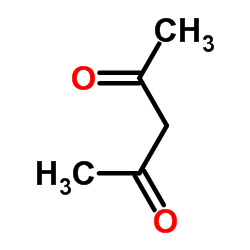
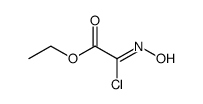

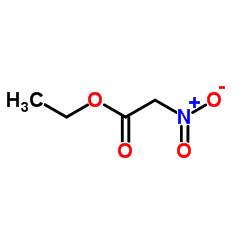
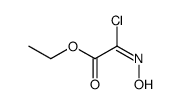
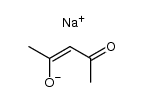
![3,4,6-trimethyl-[1,2]oxazolo[3,4-d]pyridazin-7-one structure](https://image.chemsrc.com/caspic/424/25505-97-9.png) CAS#:25505-97-9
CAS#:25505-97-9![3,4-dimethyl-6h-isoxazolo[3,4-d]pyridazin-7-one structure](https://image.chemsrc.com/caspic/463/15911-16-7.png) CAS#:15911-16-7
CAS#:15911-16-7![3,4-Dimethyl-6-phenylisoxazolo[3,4-d]pyridazin-7(6H)-one structure](https://image.chemsrc.com/caspic/001/15911-15-6.png) CAS#:15911-15-6
CAS#:15911-15-6 CAS#:3141-59-1
CAS#:3141-59-1